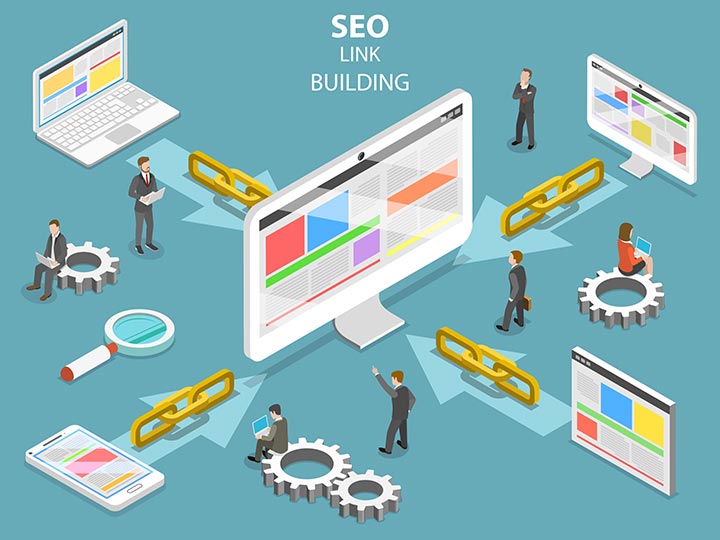Tabella dei contenuti
Have you created excellent content that satisfies users’ search intent by answering their questions? Search engines will read them, but it is not necessarily said that they will rank them solely on the basis of the qualities just mentioned. In order to be positioned on the SERPs, the pages also need authority, and this is obtained by gaining links from sites… Authoritative, in fact.
The links are the votes of the world of the web: the sites that receive many from other portals are considered authoritative and are rewarded with a good ranking on Google. On the other hand, websites that have no links are condemned to the lowest positions on search engines. Think, for example, of internal links: when we link multiple times to the same internal page of our website (from other pages of our same domain), we are telling Google that that particular page is important. The same goes for external links, that is, those that come from third party sites.
For those new to SEO strategies, understanding how link building works can be a challenge. This is because there are basically two schools of thought, whose ideas are at the antipodes:
- There are those who believe it is enough to create excellent content for links to arrive naturally;
- There are those who argue that we cannot ignore a structured outreach campaign to obtain strategic links.
Who should we listen to? As in many SEO situations, the answer is: it depends. There is no single approach, the choices and tactics depend on the objectives, the website and the sector to which they belong.
If we’ve just made it more confusing, don’t worry – here’s a guide to better understanding what link building is.
Let’s begin?
Link Building: what is it?
Link building is the process of acquiring links (called backlinks) from other websites. It is a key element of any successful SEO strategy. The main purpose is to make sure that other sites link to pages of ours, so that they can achieve a better ranking in the search results on Google. When a site A links to site B, in fact, a strong signal is sent to the Google algorithm which suggests that B deserves to achieve a better ranking for certain keywords.
This is not a simple strategy, on the contrary: link building takes time and a lot of effort. Moreover, it is not always easy to find sites that are willing to grant a link, nor is it taken for granted that all sites will do well. Domains with poor SEO metrics, high spam percentage and low traffic, in fact, penalize more than benefit. That said, the essential steps to start an outreach campaign are basically two:
- Create noteworthy content (and therefore links);
- Show it and share it with webmasters who can link to your page on their portal.
Why is link building important?
Links are one of the three biggest ranking factors on Google. Therefore, if you want your site pages to rank well on search engines, you definitely need links.

To better understand this concept, it can help, as anticipated, to think of links as votes. All sites linking to a particular page are voting it as the most authoritative among thousands of others on the same topic. And Google, along with considering other parameters, also relies on votes – or rather: links, to choose which page deserves to finish higher in the SERP.
The number of backlinks, therefore, positively affects the ranking of a page. And in the ideal world, the best pages with the most valuable content will always be the first to appear on Google, as they will receive the most links. Consequently (always in the ideal world), the lowest quality pages will not earn many links and will be relegated to the blackest and most forgotten darkness: the last positions of the search engines.
The one just described, however, is not the world we work in. In the real world, pages with the most links aren’t necessarily the best ones. How come? Because SEO can create a vicious circle. After all, what do we do every time we have to insert a link in an article that we are writing ourselves? We certainly don’t spend hours consulting and studying similar pages, but we just do a quick Google search, open and read the first results and, after verifying that they actually talk about what we were looking for, we link to what we are looking for. seems to be the best. And here is that pages already in the top positions of Google secure another link, which in turn guarantees them to anchor even more firmly to the podium of the SERP.
Furthermore, it is important to work on an outreach strategy because it is very likely that competitors are already doing it. Let’s say, for example, that a page of your website manages to reach the first position without link building. First, congratulations – it means you’ve ousted someone from the throne. This someone is going to be tough and want to win back the top spot, so he’ll start building links. And so will the sites behind your page (indeed, they are already doing). Here’s why you’ll need to start doing it too: to hold onto your ranking. And in this regard, don’t forget to peek at your competitors’ backlinks to get ideas for your strategy!
Having said that, after providing an overview of the importance of link building, it should be clarified that links are not the answer to all questions related to positioning. It is not enough to get backlinks to climb the Google ranking: to do this it is necessary to take into consideration several variables (including, in fact, also the links).
What Makes a Backlink, a Good Backlink?
Backlinks are a means to an end. Before we compared them to votes that help Google identify the pages that deserve more than others to be at the top of the SERP. But how does Google measure the value of each link? There is no single and precise answer to this question. There are, however, some general concepts to consider:
- Authority. The blog that our friend opened last week has a very different authority from the Corriere della Sera website. This is because the readers of our friend’s brand new blog can be counted for now, probably, on the fingers of one hand. Those of corriere.it, on the other hand, are millions. This is a real parameter, and is measured on a scale from 0 to 100: the lower the authority of the site that is linking to our page, the lower the backlink value;
- Relevance. Let’s say we have a site that talks about bicycles. Earning a link in an article entitled “The most beautiful cycle paths in Lombardy” has more weight than getting it in one piece on how to save money, for example (this is when the sites have the same authority). We are more interested in receiving a link from another bike enthusiast than a home finance expert;
- Anchor text. This is the clickable text (one or more words) that leads to another web page, and it is important that it already reveals what the user will find in the URL they will land on after clicking. Furthermore, anchor text also helps Google understand which keywords the page deserves to rank for. Be careful, however, not to always use the same anchor text, as the search engine may notice that you are trying to manipulate the positioning of your site.
To take a closer look at the anatomy of a backlink and anchor we can give an example:
<a href=”https://www.key-one.it/”> the Digital Provider Key-One </a>
<a represents the beginning of the link tag. It tells the browser and search engines that it is about to follow a link
href stands for hyperlink referral and introduces, in the middle of the quotation marks, the URL to which the link points (in this case https://www.key-one.it)
The Digital Provider Key-One is the anchor text
</a> signals the closing of the link tag to the search engine; - Nofollow and dofollow. When you build a link building campaign, you want to get dofollow links. The rel = “nofollow” attribute, in fact, tells Google not to count that vote (keeping alive the link-votes metaphor), since the indication that the search engine receives is, by translating the words no follow from English , not to follow that link, not to see where it leads. It is also important to pay attention to the words rel = ”sponsored”, which tells Google that the link has been paid for and therefore does not carry value;
- Location and context. Where is the link within the page content? The answer to this question affects the CTR. Let’s assume, for example, that a page is structured with main content, sidebar and footer: it is the first block to receive the greatest attention from readers. Therefore, the dofollow links found at the top of the article have a higher value than those found at the end of the piece;
- Destination. Before even thinking about how to get links, ask yourself which pages the backlinks will point to (which are, that is, the pages for which you want to improve the positioning on the SERP).
So how do you get links? Contact our link building experts and start your climb to the top of the SERP. We study a strategy and targets tailored to your business, your needs and your goals, and we use the most effective tools. In the meantime, however, we want to give you some suggestions to make your content interesting and noteworthy (and links!). Ask yourself:
- What makes your company one step ahead of others in the industry? Did you mention it on the homepage of your site?
- Are your products somehow unique? Have you created ad product pages where tell about its peculiarities and usefulness?
- Do you have innovative ideas? Do you find them in your content? Are they clearly expressed?
There are many opportunities to improve the quality of existing pages and make them worthy of links. But make sure you rely on a team of experts – it can, in fact, take months (or even years) to make up for lost positions after being penalized by Google for building toxic backlinks. In fact, Google has drafted the Webmaster Guidelines, and outreach and guest posting campaigns that violate them have a negative impact on your site.








